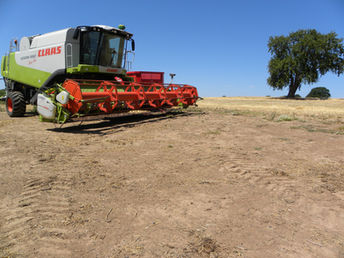top of page


© Revive_Agronomy
The Agronomist's year in Pictures
This years Cropping Season in pictures. Click and scroll to see more

Herbicide effects on Blackgrass.
The effects of residual herbicide applied earlier in the season now show as dramatic symptoms on Blackgrass plants in Oil Seed Rape crops.

How much rainfall?
It may have rained but pond levels still remain low and dykes do not show running water from land drainage tiles.

Murder.
A highly effective herbicide combination to murder bean volunteers without the use of hormone herbicides.

Autumn Sown Linseed.
Blackgrass does not mind which crop you plant it is happy to grow just about anywhere.

Winter wheat plant populations.
Another good plant population in a block of autumn sown winter wheat.

Pulling the other one.
Knock knock.
Who’s there? Cow.
Cow who?
Cow much longer can you tolerate this knocking?
Who’s there? Cow.
Cow who?
Cow much longer can you tolerate this knocking?

Size Matters.
Before spraying this autumn with contact herbicides for broad leaf weeds, best to check the plant size and stage of development.

Winter sown barley.
Nicely in row and now prone to aphid infestation and virus infection.

Autumn Sown Linseed.
Blackgrass control can be quite effective in this crop.

What fun!
Blackgrass seedlings emerging from depth in a dry, knobbly seedbed. Not the easiest of targets for residual herbicides.

Oil Seed Rape.
The early volunteer control looks good and nothing much in the way of Cabbage Stem Flea beetle damage.

Lucerne.
Wind-rowing the final cut on the lucerne.

Wet and Dry.
Autumn weathering of clay soils results in natural shrinkage as water evaporates causing clay particles to be pulled closer together causing shrinkage. If drying happens too quickly or unevenly, some parts dry and shrink while others remain wet and flexible, creating internal stress and tension that results in cracks.

Blue and Yellow.
"I need ammunition, not a ride."

What a heap!
Ensuring harvested oilseed rape is at the correct temperature and moisture for storage and delivery to crushers to avoid additional costs or rejections.

Six Row Barley.
Definitely a higher average yield but getting it in the combine with a range of 4 to 26%* brackling is a different matter. (Excludes the pigeons!)
* - AHDB 25/26 rec list.
* - AHDB 25/26 rec list.

Uninhabited.
Harvest of this field of barley now complete the combine sits once again waiting.

Down the Row.
Touching down the row but when to begin blight sprays?

Fodder Beet
A good year for fodder beet? Aphids are easy to find but how many are carrying virus?

A tent on a stick.
A pheromone trap in a crop of peas for moths.

A valuable find in the nettles.
Nothing grows particularly well without adequate moisture.

Hairy.
Similar but not the same, Mouse ear and Field Forget me knot. But which is which!

Spring Wheat emergence.
An even establishment of spring wheat plants even in this dry spring weather.

Down to Earth.
The plough has worked wonders for establishment so far this cropping season.

Winter Oil Seed Rape +/- Black grass.
Winter oil seed rape growing in a clay soil with a dense population of blackgrass, now pretty dead!
bottom of page